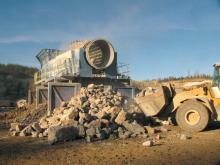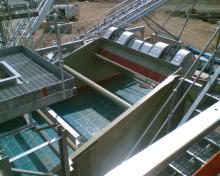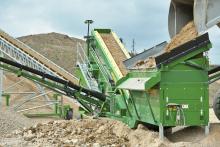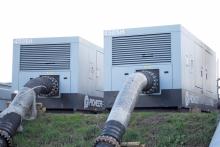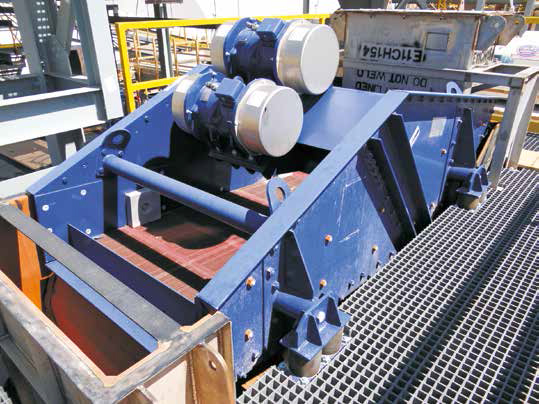
Sebastian Rakoczy,
Aggregate products are used for a number of different reasons, from separation and washing to dewatering. However, regardless of the product’s final application, the property a customer is most interested in is the average particle size.
Separating and sizing the wide range of particle sizes generated by crushing equipment is one of the most important functions after the milling process, and screens play a large part in the operation. The role played by screens is central to the quarrying process and we have seen a trend towards increasingly large units being installed at bigger quarries as operators look to increase their output. However, regardless of how big a screen may be, and what volume of material is passing through it, it is vital that it operates efficiently.
Efficiency is defined differently according to screen function. Screens fall into two main categories; separating screens that split the mixture into grades according to particle size, and dewatering screens that remove water from the final mixture so it can be easily stored and transported).
The objective for separation screens is for the maximum number of the particles that are small enough to pass through the apertures in the screen medium to do so. In contrast, the design of dewatering screens ensures the majority of the fine particles that could pass through the apertures are retained so that the screen does not change the composition of mixture when the water is removed.
It is very difficult for any separating screen to be 100% efficient, as this would mean that every single particle in the mixture small enough to fit through the screen would find its way and pass through one of the apertures in the screen medium. In reality, this is never the case as some fine particles will always be retained.
The process that helps ensure a separating screen operates efficiently is called stratification: the ease with which smaller particles are able to fall between the gaps in larger particles in order to find their way towards the apertures in the medium at the base of the bed of material.
If the correct level of stratification has been achieved, the depth of the bed will gradually decrease from the feed end to the discharge end, as finer particles are removed. Excessive bed depth at the discharge end of the screen is a sure sign of poor efficiency.
The rule of thumb used by many quarries is that it should be no more than four times the size of apertures in the screen medium.
Achieving efficiency
There are a number of ways of increasing the efficiency of a separating screen. One option is to reduce throughput but depending on output demands this is not always a viable option.
Increasing the speed at which the screen vibrates can speed up stratification and reduce the depth of the bed, but there is a compromise to be made, as speeding up the oscillation will reduce the life of the bearings within the exciters, meaning increased maintenance. The amplitude of the vibration also needs careful consideration. While it can improve stratification, too much travel can cause finer material to bounce along the screen, reducing the probability of it finding its way through an aperture. In general, separating out coarser particles calls for greater amplitude and lower frequencies, while finer particles prefer the opposite.
The size of the apertures in the screen medium is another important consideration. A proportion of the fine particles will always be retained in the oversize output and therefore the appropriate slot size to deliver a mixture of a given specification might be slightly larger than the actual separation grade required. For dewatering screens, the challenge is less complicated.
The high level of particle retention which is desirable for these screens is achieved by encouraging a much deeper bed of material on the screen, and this is done by ensuring a steep positive incline, with material held behind a discharge weir.
Specifying the right screen
To ensure the right screen is selected for any given application (one that will deliver required levels of efficiency at a high level of output) is to understand the dynamics of the specific slurry in question. There is no one-sizefits- all solution.
Before a manufacturer supplies a screen that will meet production targets, it will need detailed information on production tonnage; the type of material; the shape and size of the particles; whether the feed is delivered in a slurry; and, if so, what the concentration is.
A good equipment manufacturer should be happy to visit customer sites and consult on which products will perform well on any given application. With engineers working globally, Weir Minerals says it is perfectly positioned to support and advise customers on site, offering a wide range of screens, including horizontal and banana screens under its Enduron brand, and inclined and horizontal screens under its Trio brand. It also supplies Linatex screen media to customers across Europe.

